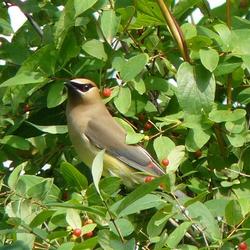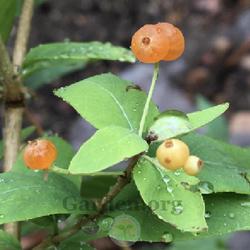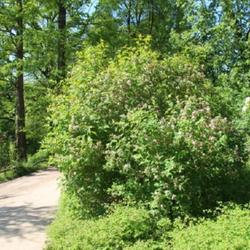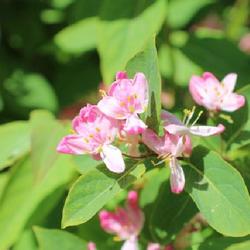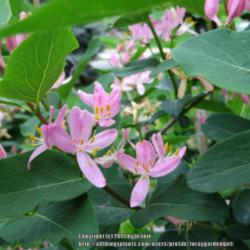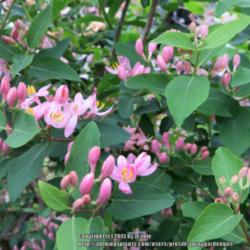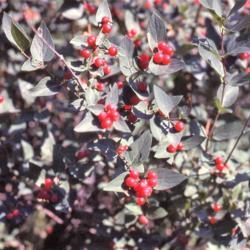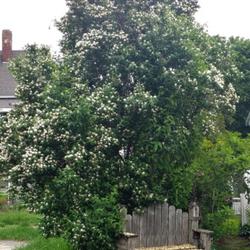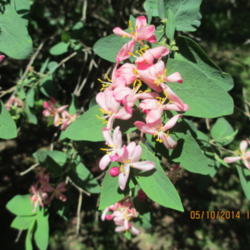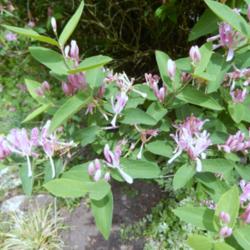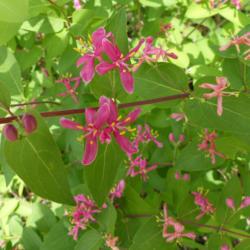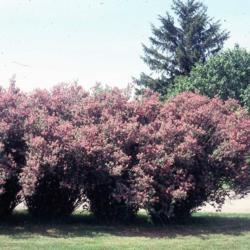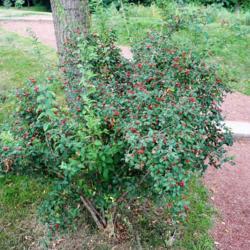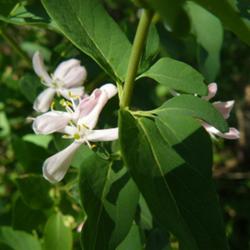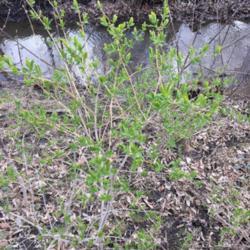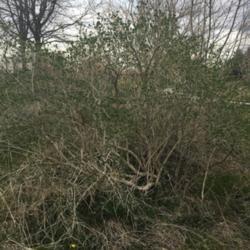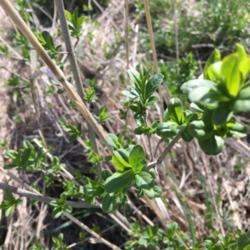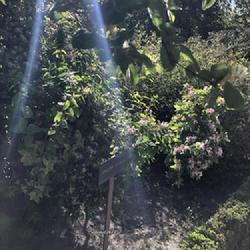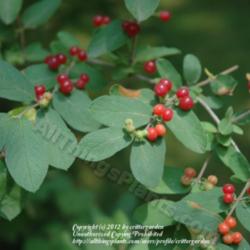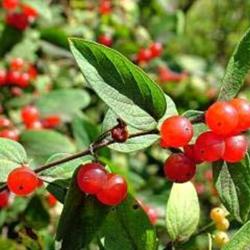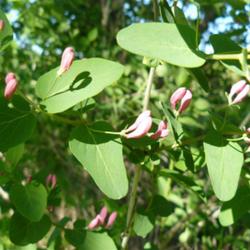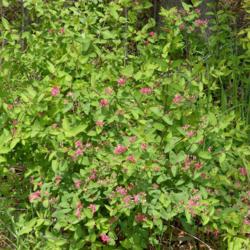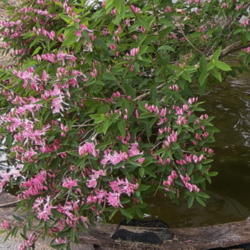Posted by
ILPARW (southeast Pennsylvania - Zone 6b) on Aug 8, 2018 10:15 AM concerning plant:
This has been a commonly planted large shrub used as a screen and hedge in the Midwestern US since the 1950's. I think it is also common in New England. My parents' neighbour to the north has had a screen of this species since the 1950's and it was removed about 2010. It is native to central Asia and southern Russia. As a professional horticulturist, I don't find this to be a lovely plant. It is densely twiggy in a messy way and develops an unkempt habit. The bluish-green leaves look great in spring but get mildew in late summer. The pink flowers, sometimes white, are nice for about 10 days in May. The red berries in late summer don't look very pretty and are eaten by some birds, but are not that great for the diet of American birds. The stringy brown bark and twigs are not pretty. The Russian Aphid makes lots of deformed growth (witches brooming) at the ends of the branches. It is fast growing and very fibrous rooted. It escapes cultivation by the berries and becomes an invasive Asian plant in eastern North America, creating a messy undergrowth. It is not as invasive and nasty as its big sister, the Amur Honeysuckle, which is larger with more pointed, dark green leaves and with white flowers. I agree with my old woody plant teacher, Dr Michael Dirr, and consider it a "terrible weed that should be avoided."
Posted by
TheMainer (Maine - Zone 4b) on Nov 26, 2022 9:27 AM concerning plant:
I have one bush that was on the property line when I bought my home. My good neighbor likes it, so it stays. It attracts hummingbirds and lots of bees. I've read Lonicera blossoms are edible and can be used to make jelly, tea, and be put on salads, but I'm not sure if that applies to Tatarica. Persistent red berries appear after blossoming which I see are attracting Robins, Cedar Waxwings, and Starlings. Sparrows and Robins nest in this gnarly bush every year. It's listed as invasive, but it hasn't caused any problems here. It has a lot of shallow fibrous roots. Aphids found the bush a couple of years ago and have feasted on it ever since which causes the growth at the end of the branches to deform. Berries have a low toxicity level for humans.
Posted by
Mindy03 (Delta KY) on Apr 16, 2012 1:01 PM concerning plant:
Honey bees get nectar and light brown/tan pollen from this plant.
Posted by
threegardeners (Brockville, Ontario, Canada - Zone 5a) on Oct 20, 2011 4:24 PM concerning plant:
This is a beautiful, Spring flowering bush growing "wild" on my fence line.
Flowers are highly scented, more so in the late evening and at night.
The reddish-orange berries it produces in the Fall attract birds, especially Cedar Waxwings.
Slow growing, no maintenance bush. I've never noticed any pests or diseases in the 20 years I've been here.
